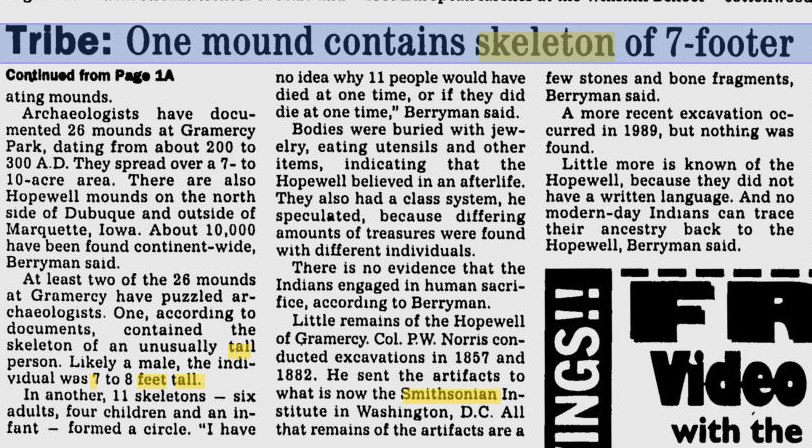Gramercy Park Giants, 7 & 8 foot
 Gramercy Park Giants, 7 & 8 foot
Gramercy Park Giants, 7 & 8 foot
Tribal Mound Contains Skeleton of 7-footer
Continued from Page 1A
Excavations at ancient burial mounds are providing insight into the lives of the Hopewell Indians who lived in Iowa 1,500 years ago.
One of the mounds at Gramercy Park in Richland contained the skeleton of an unusually tall person, likely a male, who was 7 to 8 feet tall. In another mound, 11 skeletons, six adults, four children, and an infant, formed a circle. “I have no idea why 11 people would have died at one time, or if they did die at one time,” said archaeologist Mark Berryman.
Archaeologists have documented 26 mounds at Gramercy Park, dating from about 200 to 300 A.D. They spread over a 10-acre area. There are also Hopewell mounds on the north side of Dubuque and outside of Marquette, Iowa. About 10,000 have been found continent-wide, Berryman said.
Bodies were buried with jewelry, eating utensils, and other items, indicating that the Hopewell believed in an afterlife. They also had a class system, speculated Berryman, because differing amounts of treasures were found with different individuals.
There is no evidence that the Indians engaged in human sacrifice, according to Berryman.
Little remains of the Hopewell of Gramercy. Col. P.W. Norris conducted excavations in 1857 and 1882. He sent the artifacts to what is now the Smithsonian Institute in Washington, D.C. All that remains of the artifacts are a few stones and bone fragments, Berryman said.
A more recent excavation occurred in 1989, but nothing was found.
Little more is known of the Hopewell because they did not have a written language. And no modern-day Indians can trace their ancestry back to the Hopewell, Berryman said.
- Research done by Rephaim23
Comment